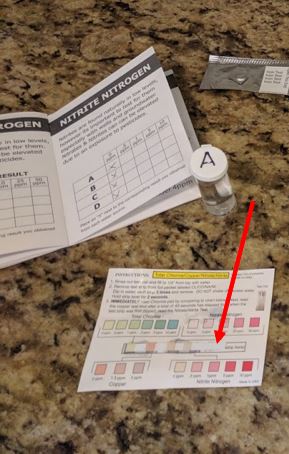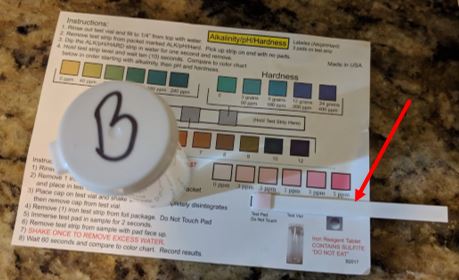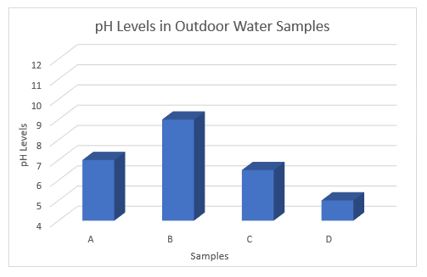If you were stranded outside with no drinking water, what would you do? Depending on where you are, you may have many different sources of water, but which one would be the safest to drink? In this experiment, we’ll be testing a variety of natural water sources to determine which one, if any, would be safe to drink in an emergency.
Test Assured’s 4 Test Kit Set for Schools and Science Fairs is the perfect kit to complete these tests and compare water sources. This set includes 4 test kits and is appropriate for children in grades three through twelve.
Supplies
The first thing you need to do is gather your supplies:
- Test Assured 4 Test Kit Set with TD Meter
- 4 different outdoor water sources
- Zipper sandwich bags
- Paper towels

Preparation
To prepare for the tests, you’ll need to gather your water samples. For this experiment, you need to find four outdoor water sources. We used water from:
- A rain barrel
- A freshwater lagoon
- A puddle
- The Atlantic Ocean




We found that one of the easiest ways to handle water samples is to use zipper sandwich bags. You can easily label the bags, and they are large enough to allow for the TDS test. For more stability (and less chance of spills) you can put the baggies inside mugs or cups.
Now is a good time to label your vials and write your water sources in the results notebook.

Testing
The first test you want to start with is for total dissolved solids, using the TDS meter. The meter will not fit in the test vials, so it is easier to complete this part of the experiment while your samples are still in the baggies. To perform the TDS test, simply turn on the meter and submerge the prongs in the samples. Rinse the meter with clean water between each test. Record your results in the results notebook.
Read the TDS meter carefully. Because some outdoor water samples can contain sediment, it is not unusual to get a high TDS reading. Readings above 999 will be indicated with “x10” in the right corner. The arrow in the picture is pointing to where you will see the “x10” if you have a high reading like ours. If you have an extremely high number of dissolved solids in your sample, the meter will read “ERR.” This means there were more solids than the meter could read. We got an “ERR” message when we tested the TDS level of the ocean water.

After completing the TDS test, you will need to pour your samples into the vials you labeled. To transfer your samples to the vials, simply snip off a small corner of the baggie to create a spout. Fill each vial to within a ¼” of the top. Be sure to wipe up any spills, so you don’t contaminate the test strips.

Before you get started with the tests, now is a good time to make some visual observations. Take notes about how clear or cloudy your samples look. Some of your samples may be cloudier than the others. Or, you may find that there is dirt and debris in your samples. These observations can be written in the “Notes” on the last page of the results notebook.
Now you’re ready to get started with the rest of the tests. It’s best to work with one sample at a time. Follow these instructions to complete the remaining tests.
Alkalinity/pH/Hardness Test
- Remove the test strip from the packet labeled, “ALK/pH/Hard”
- Pick up the strip on the end with no pads
- Dip the strip in the sample for one second and remove
- Hold the test strip level and wait 10 seconds
- Place the strip as shown in the picture and compare to the color chart for alkalinity, pH, and hardness
- Record your results in the results notebook

Total Chlorine/Copper/Nitrate/Nitrite Test
- Remove the test strip from the packet labeled, “CL/CO/NA/NI”
- Pick up the strip on the end with no pads
- Dip the strip in the sample three times and remove – DO NOT SHAKE OFF EXCESS WATER
- Hold the test strip level for 2 seconds
- Place the strip as shown in the picture and compare to the color chart for chlorine and copper
- Wait 45 seconds before reading the results for nitrate and nitrite
- Record your results in the results notebook

Iron Test (Complete this test last)
- Remove one iron reagent tablet from the foil packet and place in test vial (the reagent could alter the results of other tests which is why the iron test is completed last)
- Place the cap on the test vial and shake for approximately one minute, until the tablet is completely dissolved
- Remove the test strip from the packet labeled, “Iron Test”
- Dip the strip in the sample for 2 seconds
- Shake the strip once and wait 60 seconds
- Place the strip as shown in the picture and compare to the color chart for iron
- Record your results in the results notebook

Repeat all three tests for each of your samples.
Results
Now that you have completed each of the four tests on your four samples, it’s time to look at your results. Ask yourself these questions:
- Which tests showed similar levels across all samples?
- Which tests showed the most variation across all samples?
- What sample would be the safest to drink in an emergency?
- Which sample best meets the EPA recommended levels for drinking water? (These are listed in the Guide & Results Notebook.)
- Were there results that you found surprising?
Record your answers on the “Notes” page. If you are using this as a science fair project, you can use clear tape to fix the test sticks to the color charts to display your results.
You may even want to create some graphs or charts from your results.

